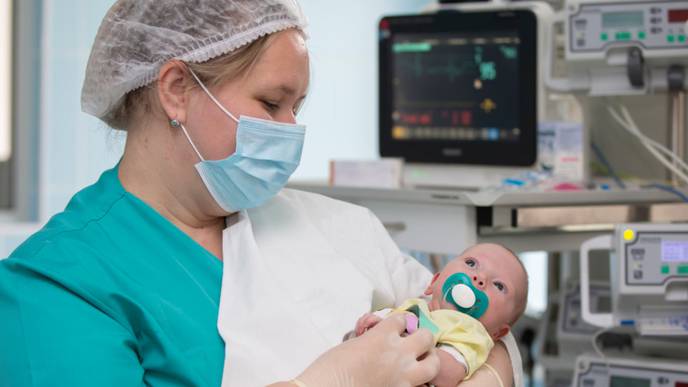AI Algorithms Can Determine How Well Newborns Nurse, Study Shows

04/30/2024
Is tongue-tie surgery needed?
An estimated 7% of babies are diagnosed with a condition called tongue-tie, in which the connection between the tongue and the floor of the mouth is too strong and limits tongue movement. The condition presents challenges with breastfeeding and often requires surgery, known as a frenotomy, where the connective tissue between the tongue and the floor of the mouth are cut.
Data from the device showed there was not a change pre and post-surgery for half of the infants examined who had undergone a frenotomy. The other half, whose data patterns were abnormal, and whom the algorithms identified as needing a frenotomy, did benefit from the operation with much improved suckling behavior after the surgery.
These results suggest that, in some cases, surgical interventions could potentially be prevented.
Data from the device also flagged abnormal nursing behavior in five babies, which had not been found during a clinical exam.
These findings are important because frenotomies have had a tenfold increase in less than a decade. “Our data show that frenotomies are not a blanket solution for breastfeeding difficulties,” Walsh added.
How the study was conducted
The proof of concept study was approved by UC San Diego’s Internal Review Board. Parents of healthy full-term infants under 30 days old were recruited from the UC San Diego Center for Voice and Swallowing, department of pediatrics and Jacobs Medical Center at UC San Diego Health.
In all, the 91 participants in the proof of concept study were recruited during routine postpartum care with their general pediatrician at UC San Diego Health or while consulting with feeding specialists at their respective locations. Infant inclusion criteria included full-term healthy infants establishing breastfeeding and without significant birth or postpartum complications.
Clinicians were blinded to device data in this study and performed evaluations solely based on standard practice. After clinical assessments, parents were provided the opportunity to introduce the modified pacifier for a 60 second measurement of their infant’s intraoral suckling vacuum.
Next steps
Next steps include conducting a clinical trial outside of UC San Diego Health with the ultimate goal of making both the device and algorithm widely available in pediatric practices, where they could be used during an infant's first visit.
Friend and Walsh are in the process of starting a company to license the technology from UC San Diego and bring it to the clinic.
The study was funded in part with the Galvanizing Engineering in Medicine initiative at UC San Diego, the National Institutes of Health and the Willia H. and Mattie Wattis Harris Foundation and the UC San Diego Krupp Center for Integrative Research.
Application of Statistical Analysis and Machine Learning to Identify Infants’ Abnormal Suckling Behavior
Phuong Truong and James Friend, Medically Advanced Devices Laboratory, Department of Mechanical and Aerospace Engineering, Jacobs School of Engineering and Department of Surgery, School of Medicine, University of California at San Diego
Erin Walsh, Center for Voice and Swallowing, Department of Otolaryngology, School of Medicine, University of California at San Diego
Vanessa P. Scott and Michelle Leff, Department of Pediatrics, School of Medicine, University of California at San Diego, San Diego
Alice Chen, UC San Diego School of Medicine, UC San Diego Health, Department of Family Medicine

Facebook Comments